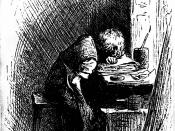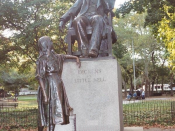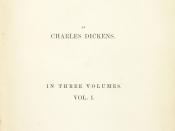Meriem Jerbi MA1 Literature
The study of characters of a literary work is as important as the study of its content because it offers a venue through which the writer's thematic concerns are articulated and broached. In fact, critics and writers go to great lengths in drawing a well distinctive classification of characters. In the 20th century, a broad theoretical distinction was frequently made between flat and round characters. Relying on E.M Forster's book Aspects of the Novel, this present essay is meant not only to delve into the features of the two aforementioned types of characters, but also to investigate the extent to which this classification is always applicable and valid. Therefore, it will be divided into three major parts: The first part is going to cast light on the traits of a round character. A study of a flat character and its features will be the focus of the second part.
Finally, an account of how a flat character can be perceived as a round one will follow.
To start with, it is quite insightful to highlight the general meaning of a round character. The latter, in Forster words, is someone who is ''complex in temperament and motivation [â¦] he is as difficult to describe with any adequacy as a person in real life''. Thus, a round character is notable for their complexity and life likeness. More to the point, this type of character should undergo a radical change throughout the literary work. For instance, the character of Pip in Charles Dickens'sGreat Expectations is a good example of a round character that undergoes a change from a low social status to a higher one. For instance, Newly asserts that "there is no question that in Pip, Dickens achieves [â¦] a truly convincing evolution of character...


